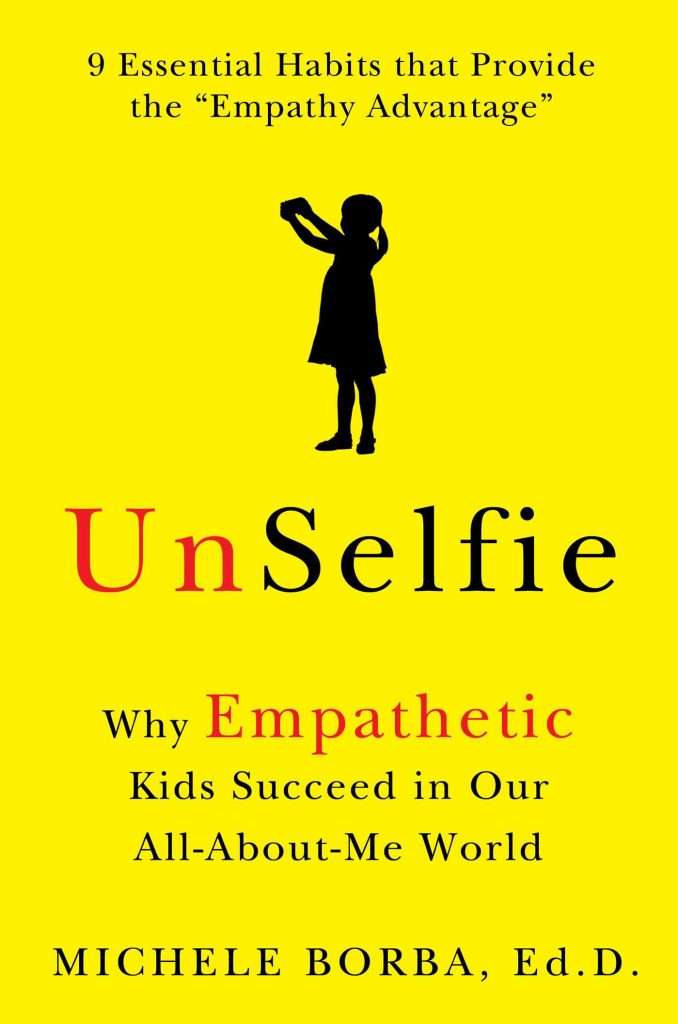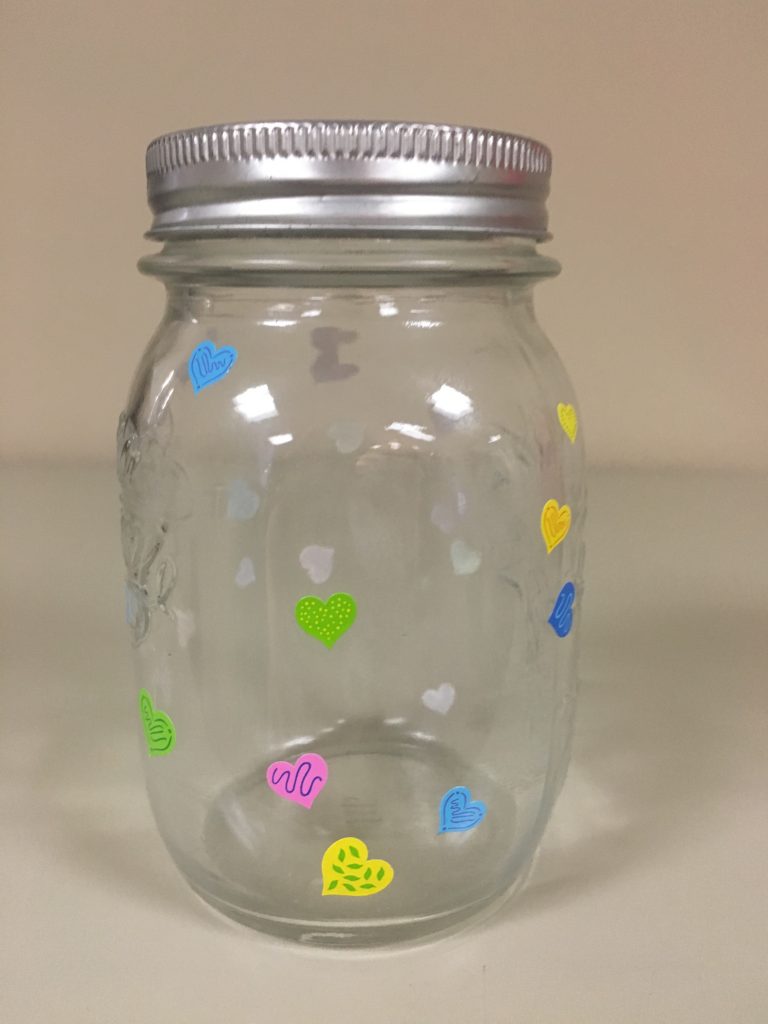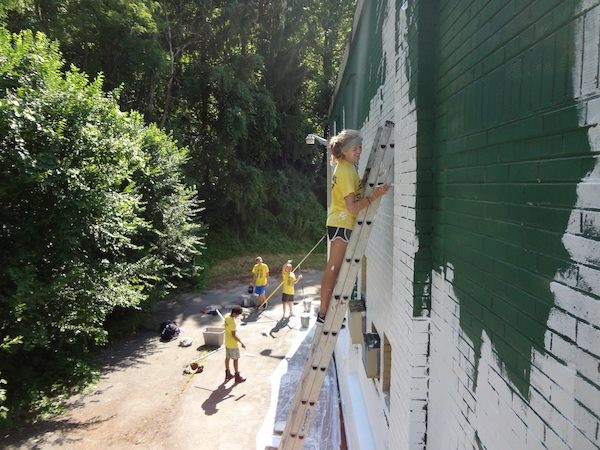
By Mary Ellen Christy
Empathy is defined as the ability to not only sympathize with a person but the ability to understand another person from their perspective and to be able to put yourself in their shoes. A leading expert on empathy is Dr. Michele Borba Ed.D. author of the best-selling book: Unselfie: Why Empathic kids succeed in ourall about me world. Two years ago, I invited Michele to speak at the Annual Legacy Lecture series honoring the memory of Courtney Kyte Plandowski. It was a life changing experience for me and all of the parents and educators lucky enough to hear her speak.


Dr. Michele Borba.
Dr. Borba’s research has taken her to most corners of the earth and involved a study of millions of children in a variety of school environments has made her a leading expert on empathy. There is a direct correlation between empathy and emotional intelligence. This wonderful book is filled with astout observations and practical solutions that will help you and your family lead more happy, productive, and successful lives. Dr. Borba identified 9 essential habits we need to provide our children with to give them the empathy advantage:
- Emotional literacy
- Moral identity
- Perspective taking
- Moral imagination
- Self-regulation
- Practicing kindness
- Collaboration and teamwork
- Moral courage
- Altruistic leadership
An example of emotional literacy in Dr. Borba’s book is a story she tells of a school aged class in Canada where each week they were visited by a special teacher. In observing the anticipation of the children who were awaiting the arrival of the special teacher, Dr. Borba played the guessing game with herself: will it be a musician? Will it be an artist? Will it be a scientist? To her amazement the special teacher was a 6-month-old baby girl. The students gathered in a circle on the floor of the classroom with the infant girl in the center. The assignment for the students was to keep her from crying by doing whatever they needed to do. Inherent in this was the necessity to observe subtle changes in her posture, affect, and facial expressions. This is a classic example of emotional literacy which could be easily translated into securing a job during an interview, closing a deal, resolving family conflict. The life skills of collaboration, innovation, and problem solving are best learned early and practiced often.
The need for kindness in a “me too” society should be obvious for everyone. Unfortunately, random acts of kindness have become rarer and rarer. In fact, Dr. Borba’s research substantiates that children are now 40% less empathetic than those of 30 years ago. Kindness is something once learned, needs to be practiced to then be ingrained in your child’s personality and self identity. Ways to do this are to institute a kindness jar, box, or board within your family. Last month I suggested that families make a practice of a weekly family meeting. The ideal time to introduce this kindness jar is at this family meeting. The implementation of this practice is as follows: when one member of the family shows empathy by doing a random act of kindness the recipient writes down the unsolicited kindness from someone in the family and it is placed in the jar. For example, one brother is studying for a Chemistry exam, but it is his turn to take the dog on the late night walk and without being asked to do so his brother does it for him.

A kindness jar.
For the development of collaborative teamwork and perspective taking, plan a family outing on a shelter to serve others or sign your children up for a service project. An easy example for families of children any age to encourage concern for others less fortunate, you can prepare both nutrition and hygiene packs which you can keep in your car or stroller. Some things to include in these packs are healthy snacks, baby wipes, mints, juice boxes, band aids, Kleenex, toothbrush and toothpaste, and hats and gloves for the winter months. This is an appropriate but safe way to use kindness, collaborative teamwork, and perspective taking in an urban family everyday life. Another way to foster these skills is to investigate community service projects which are often provided by your Church, Synagogue, or Community Center. These opportunities exist in terms of trips away to rebuild homes but also raking the leaves of a senior citizen who lives nearby. This gives your children an opportunity to work as a team and take perspective while also practicing kindness.

Children engaged in a community service project.
If I can offer one key takeaway or a place where you can begin to implement these things: set aside time where your entire family is unplugged. We don’t have to look very far to see people who are completely addicted to technology. You are in a beautiful restaurant and a couple are sitting at a romantic dinner for two and they are both on their phones texting. Just a few days ago as I was heading North on State street a man on a bicycle made a left turn in front of me and nearly cut me off and continued never looking up because he was too focused on his phone rather than the road. Talk to each other when you are in the car as a family, don’t fall prey to giving an iPad to a young child on a short car trip. Engage them in conversation and you may even want to create your own funny little games. Last August when I took my two granddaughters on a two hour road trip to our home in Wisconsin I made up a little game of things they could look for that were unusual but possible such as: an orange car, an ambulance, a convertible with the top down, a car pulling a boat on a trailer, and I did not give them a list in advance but we ticked them off one at a time. Each person received a point with 25 cents and they were into it and we had a fantastic time. I recall being in a restaurant on Mother’s Day with a large party ranging from college to two years of age. We were a lively, boisterous, and happy group. I looked to the table on the left which was a mother, father, and three children and each person at that table was plugged into a personal device. Take these examples as a challenge to be the best versions of ourselves and encourage our children to do the same.







